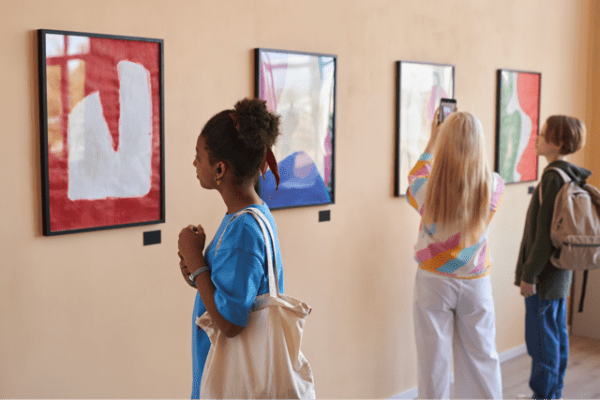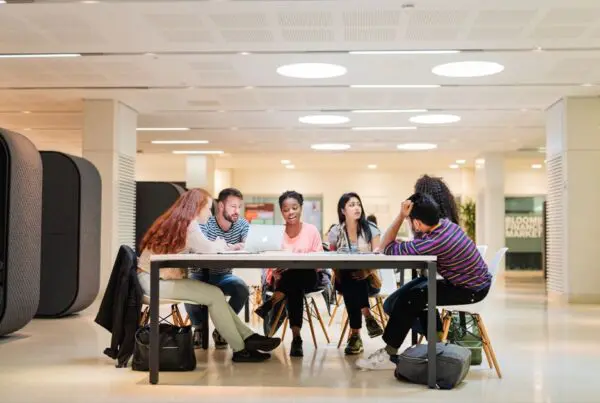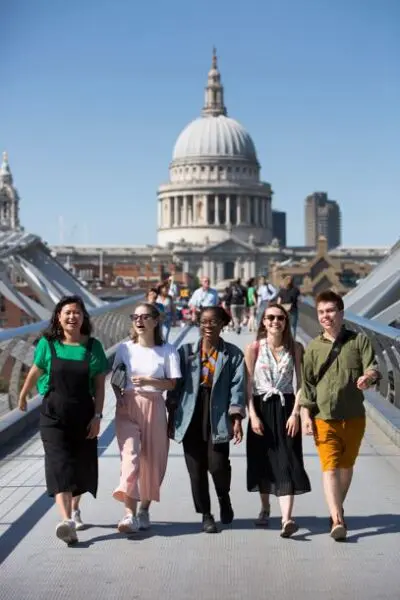
Utrecht, Netherlands
European Encounters
When:
07 July - 01 August 2025
Credits:
10 EC
Read more
Cultural Studies
When:
24 July - 28 July 2023
School:
Berlin Summer University of the Arts
Institution:
Berlin University of the Arts
City:
Country:
Language:
English
Credits:
1 EC
Fee:
580 EUR

Is there a unity of the arts? What does it mean to speak of art in general, or to insist on the specificity of a medium? We will examine how the arts relate to one another, problematize the “post-media” abstraction of contemporary art and focus on the transitions between forms.
Painting a picture, writing a poem, playing a tune – all these practices are considered artistic. The painter, poet, or musician are all called artists. But what does this imply? We are considered “native” speakers of our respective languages, yet no one is said to be native in one of these mediums. Are all of them simply facets of a general phenomenon we call art? Can we even speak of such a shared essence or are we to pluralize – the arts, the sciences? The problem further surfaces when a novel is turned into a play, a poem into a sculpture, life into a painting. The desire to translate one form into another is not merely a desire to repeat. When a novel is on stage, there are bodies, there are lights, there are images, additions, sensorial stimulations no longer confined to the prior, “original” medium.
However, an idea for a film is different from one for a painting. Certain ideas appear to require specific media and to appeal to different senses. Is this apparent necessity a mere contingency, a socio-historical situation, or is there more to the division of the arts than path-dependency, state intervention, norm, or custom? What does it mean for an idea to call for a form, what does it mean for a form to hold?
Contemporary art seems to have moved beyond forms: artworks are distributive, no longer confined in traditions or movements, no longer tied to specific, arduous skills and techniques. Does this “post-medial” pluralism grasp anything? Is there anything that resists this inflated claim of global availability and interchangeability? Does the abstraction of contemporary art capture anything beyond the reality of globalized capital?
Together, we will investigate the relation between art and the arts via artistic practices and theory. Our days together will comprise text discussion, exhibition visits, engagements with individual works and group activities tied to our guiding questions. Provisional readings include, but are not limited to: Rosalind Krauss, Theodor W. Adorno, Édouard Glissant, Barbara Cassin, Edward Saïd, Catherine Malabou, Sianne Ngai, Heinrich von Kleist, Maurice Blanchot, Jean-Luc Nancy.
Schedule:
Day 1 – Introduction: Art and the arts – a conceptual history
Day 2 – Translational acts and the untranslatable
Day 3 – Presentation of participants’ projects + exhibition visit in Berlin
Day 4 – Contemporary art & the crisis of the sign
Day 5 – “Post-Mediality” and politics
Marcus Quent and Pierre Schwarzer
We welcome artists and theoreticians of every discipline interested in artistic and political questions alike.
In this five-day intensive workshop, we will examine the relationship of the arts to one another, the transitions and translations between the individual arts, but also the historical emergence of the singular concept of art and its differential effects. What happens exactly when artistic forms dissolve, collide or merge? What occurs in the passage from one condition to another, what takes place when one form swallows another, when one medium sways into a priorly guarded tradition?
Fee
580 EUR, course fee
When:
24 July - 28 July 2023
School:
Berlin Summer University of the Arts
Institution:
Berlin University of the Arts
Language:
English
Credits:
1 EC

Utrecht, Netherlands
When:
07 July - 01 August 2025
Credits:
10 EC
Read more

London, United Kingdom
When:
07 July - 26 July 2025
Credits:
10 EC
Read more

London, United Kingdom
When:
07 July - 26 July 2025
Credits:
10 EC
Read more